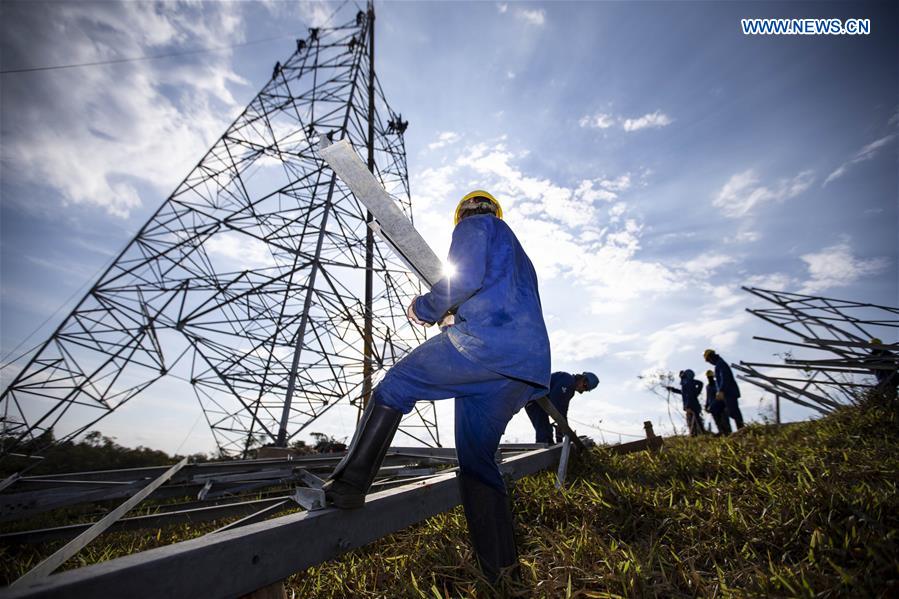BRIng smiles on more faces
Proposed by China in 2013 to promote common growth and shared benefits, the BRI involves infrastructure development, trade and investment facilitation and people-to-people exchanges that aim to improve connectivity on a trans-continental scale.
Works are seen at a site for the ultra-high voltage electricity transmission project at the Belo Monte hydroelectric dam in Brazil, on Aug. 7, 2018. [Photo/Xinhua]
Super green power
The situation in Anapu of Para state, home to a vast Amazon rainforest reserve in northern Brazil, is about to change, too.
"This region is known for being very poor, very needy," Marcelo Pellett, a Brazilian environmental technician, told Xinhua.
With the arrival of Chinese workers and their power projects in 2016, local people's life has gradually improved, he said, adding that more importantly, they strove to leave a minimal mark on the ecology.
As Chinese company State Grid Brazil Holding built an ultra-high-voltage power line in the region, the 105-meter-high transmission towers they erected were at least 25 meters higher on average than the conventional ones.
"This effort significantly increases the project's cost, but it is worthy of protecting the Earth's green lung, the Amazon jungle," said Yang Guangliang, an assistant manager in charge of transmission lines in the project.
The project also experienced some adjustments during its implementation as several archaeological sites were found in the course of the work, said Yang, adding that they also bypassed an area where parrots had an active presence.
"The Chinese uncles help us build infrastructure. They not only help the local people, but also protect the animals, plants and our Para state's rainforest," William Paulo Santos, 13, said.
"I've become good friends with them," he added, with a bright smile.
Besides supplying clean energy, the power project has also created 16,000 local jobs, boosted Brazil's electric equipment industry, and helped build nearly 2,000 km of highways and 350 bridges.


